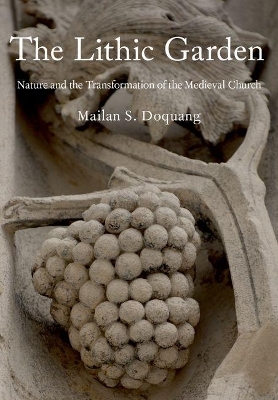
The Lithic Garden
Nature and the Transformation of the Medieval Church
Seiten
2018
Oxford University Press Inc (Verlag)
978-0-19-063179-6 (ISBN)
Oxford University Press Inc (Verlag)
978-0-19-063179-6 (ISBN)
The Lithic Garden addresses the formal, symbolic, and ideological functions of foliate ornament in medieval French churches, offering remarkable new insights on the complex relationship between organic and figural sculptures, interior and exterior design, sacred and profane spaces, and artistic form and liturgy.
The Lithic Garden offers innovative perspectives on the role of ornament in medieval church design. Focusing on the foliate friezes articulating iconic French monuments such as Amiens Cathedral, it demonstrates that church builders strategically used organic motifs to integrate the interior and exterior of their structures, thus reinforcing the connections and distinctions between the entirety of the sacred edifice and the profane world beyond its boundaries. With this exquisitely illustrated monograph, Mailan S. Doquang argues that, contrary to widespread belief,
monumental flora was not just an extravagant embellishment or secondary byproduct, but a semantically-charged, critical design component that inflected the stratified spaces of churches in myriad ways. By situating the proliferation of foliate friezes within the context of the Crusades, The Lithic Garden provides insights into the networks of exchange between France, Byzantium, and the Levant, contributing to the "global turn" in art and architectural History.
The Lithic Garden offers innovative perspectives on the role of ornament in medieval church design. Focusing on the foliate friezes articulating iconic French monuments such as Amiens Cathedral, it demonstrates that church builders strategically used organic motifs to integrate the interior and exterior of their structures, thus reinforcing the connections and distinctions between the entirety of the sacred edifice and the profane world beyond its boundaries. With this exquisitely illustrated monograph, Mailan S. Doquang argues that, contrary to widespread belief,
monumental flora was not just an extravagant embellishment or secondary byproduct, but a semantically-charged, critical design component that inflected the stratified spaces of churches in myriad ways. By situating the proliferation of foliate friezes within the context of the Crusades, The Lithic Garden provides insights into the networks of exchange between France, Byzantium, and the Levant, contributing to the "global turn" in art and architectural History.
Mailan S. Doquang holds a PhD in medieval architecture from the Institute of Fine Arts, New York University. She has held lectureships at Princeton University, McGill University, and Ithaca College. She is the recipient of fellowships from the Social Sciences and Humanities Research Council of Canada, the Andrew W. Mellon Foundation/American Council of Learned Societies, and the Princeton-Mellon Initiative in Architecture, Urbanism, and the Humanities.
Acknowledgments
List of Abbreviations
Introduction
Chapter 1: The Foliate Frieze as Architectonic Framing Device
Chapter 2: Paradise Found
Chapter 3: The True Vine
Chapter 4: The Golden Vine
The Garden: An Afterword
Notes
| Erscheinungsdatum | 06.02.2018 |
|---|---|
| Zusatzinfo | 162 illustrations, with 50 in color |
| Verlagsort | New York |
| Sprache | englisch |
| Maße | 257 x 183 mm |
| Gewicht | 816 g |
| Themenwelt | Kunst / Musik / Theater ► Kunstgeschichte / Kunststile |
| Geschichte ► Allgemeine Geschichte ► Mittelalter | |
| Geschichte ► Teilgebiete der Geschichte ► Religionsgeschichte | |
| Religion / Theologie ► Christentum ► Gebete / Lieder / Meditationen | |
| Technik ► Architektur | |
| ISBN-10 | 0-19-063179-1 / 0190631791 |
| ISBN-13 | 978-0-19-063179-6 / 9780190631796 |
| Zustand | Neuware |
| Haben Sie eine Frage zum Produkt? |
Mehr entdecken
aus dem Bereich
aus dem Bereich
eine neue Geschichte des Mittelalters
Buch | Hardcover (2023)
C.H.Beck (Verlag)
CHF 53,20


